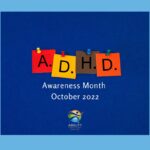Attention Deficit Hyperactivity Disorder (ADHD) is a neurodevelopmental condition that affects millions of individuals worldwide. Characterized by persistent patterns of inattention, hyperactivity, and impulsivity, ADHD can significantly impact various aspects of life, including academic performance, work productivity, and social interactions. This article delves into the symptoms, diagnosis, and effective management strategies for ADHD disorder.
Understanding ADHD Disorder
ADHD disorder is typically identified in childhood, but its symptoms can persist into adulthood, often resulting in lifelong challenges. The disorder is categorized into three subtypes: predominantly inattentive presentation, predominantly hyperactive-impulsive presentation, and combined presentation.
Symptoms of ADHD Disorder
The symptoms of ADHD disorder can vary widely among individuals and are generally divided into two main categories: inattention and hyperactivity-impulsivity.
Inattention
Individuals with the inattentive subtype may exhibit the following symptoms:
-
Difficulty sustaining attention in tasks or play activities
-
Frequent careless mistakes in schoolwork or other activities
-
Seeming not to listen when spoken to directly
-
Failing to follow through on instructions and failing to finish tasks
-
Difficulty organizing tasks and activities
-
Avoiding or being reluctant to engage in tasks that require sustained mental effort
-
Frequently losing items necessary for tasks and activities
-
Easily distracted by extraneous stimuli
-
Forgetfulness in daily activities
Hyperactivity and Impulsivity
Those with the hyperactive-impulsive subtype may show signs such as:
-
Fidgeting with or tapping hands or feet or squirming in their seat
-
Leaving their seat in situations when remaining seated is expected
-
Running or climbing in inappropriate situations
-
Inability to play or engage in activities quietly
-
Talking excessively
-
Blurting out answers before questions have been completed
-
Difficulty waiting their turn
-
Interrupting or intruding on others’ conversations or games
Diagnosing ADHD Disorder
The process of diagnosing ADHD disorder is comprehensive and involves multiple steps to ensure accuracy. There is no single test for ADHD, and diagnosis often relies on the evaluation of various factors.
Clinical Assessment
A thorough clinical assessment by a healthcare professional is crucial. This typically includes:
-
Detailed medical history: Gathering information about the individual’s medical, family, and social history.
-
Behavioral assessments: Using standardized behavior rating scales and checklists completed by parents, teachers, and sometimes the individual.
-
Clinical interviews: Conduct interviews with the individual, family members, and teachers to obtain a complete picture of the individual’s behavior across different settings.
Criteria for Diagnosis
The Diagnostic and Statistical Manual of Mental Disorders (DSM-5) outlines specific criteria for diagnosing ADHD disorder. These criteria require that symptoms:
-
Be present for at least six months
-
Be inappropriate for the developmental level of the individual
-
Cause significant impairment in social, academic, or occupational functioning
-
Appear before the age of 12
-
Occur in two or more settings (e.g., home, school, work)
Differential Diagnosis
It is essential to rule out other conditions that might mimic ADHD symptoms, such as anxiety disorders, depression, learning disabilities, and thyroid disorders. This comprehensive approach ensures that ADHD disorder is accurately diagnosed and appropriately managed.
Effective Management Strategies for ADHD Disorder
Managing ADHD disorder effectively requires a multi-faceted approach that combines medical, behavioral, and educational strategies tailored to the individual’s unique needs.
Medical Interventions
Medication is often a cornerstone of ADHD treatment and can significantly reduce symptoms in many individuals.
Stimulant Medications
Stimulants are the most commonly prescribed medications for ADHD disorder and include drugs such as methylphenidate (Ritalin, Concerta) and amphetamines (Adderall, Vyvanse). These medications help increase attention and decrease impulsivity and hyperactivity.
Non-Stimulant Medications
Non-stimulant medications, such as atomoxetine (Strattera) and guanfacine (Intuniv), can be effective alternatives for individuals who do not respond well to stimulants or experience adverse side effects.
Behavioral Therapies
Behavioral therapy plays a crucial role in managing ADHD disorder and involves strategies designed to modify behavior and improve social skills.
Cognitive Behavioral Therapy (CBT)
CBT focuses on changing negative thought patterns and behaviors. It helps individuals develop coping mechanisms, improve time management, and enhance problem-solving abilities.
Parent Training and Education
For children with ADHD, parent training programs can be highly beneficial. These programs teach parents strategies to manage their child’s behavior, improve communication, and establish consistent routines.
Educational Interventions
Educational support is essential for individuals with ADHD disorder, particularly school-aged children.
Individualized Education Plans (IEP) and 504 Plans
These plans provide accommodations and modifications tailored to the student’s needs, such as extended time on tests, preferential seating, and additional breaks.
Classroom Strategies
Teachers can implement strategies to support students with ADHD, such as breaking tasks into smaller, manageable steps, using visual aids, and providing frequent positive reinforcement.
Lifestyle and Environmental Modifications
Creating a supportive environment at home and school is crucial for individuals with ADHD disorder.
Structured Routine
Establishing a structured daily routine can help individuals with ADHD stay organized and reduce the likelihood of forgetfulness and missed tasks.
Healthy Lifestyle Choices
Encouraging a healthy lifestyle with regular physical activity, a balanced diet, and adequate sleep can positively impact ADHD symptoms.
Support and Advocacy
Support groups and advocacy organizations offer valuable resources for individuals with ADHD disorder and their families. These groups provide education, emotional support, and opportunities to connect with others facing similar challenges.
Conclusion
ADHD disorder is a complex condition that requires a comprehensive approach to diagnosis and management. Understanding the symptoms and obtaining an accurate diagnosis are crucial first steps. With a combination of medical interventions, behavioral therapies, educational support, and lifestyle modifications, individuals with ADHD can lead successful and fulfilling lives. Ongoing support and advocacy are essential in empowering those affected by ADHD disorder to navigate their unique challenges and maximize their potential.




